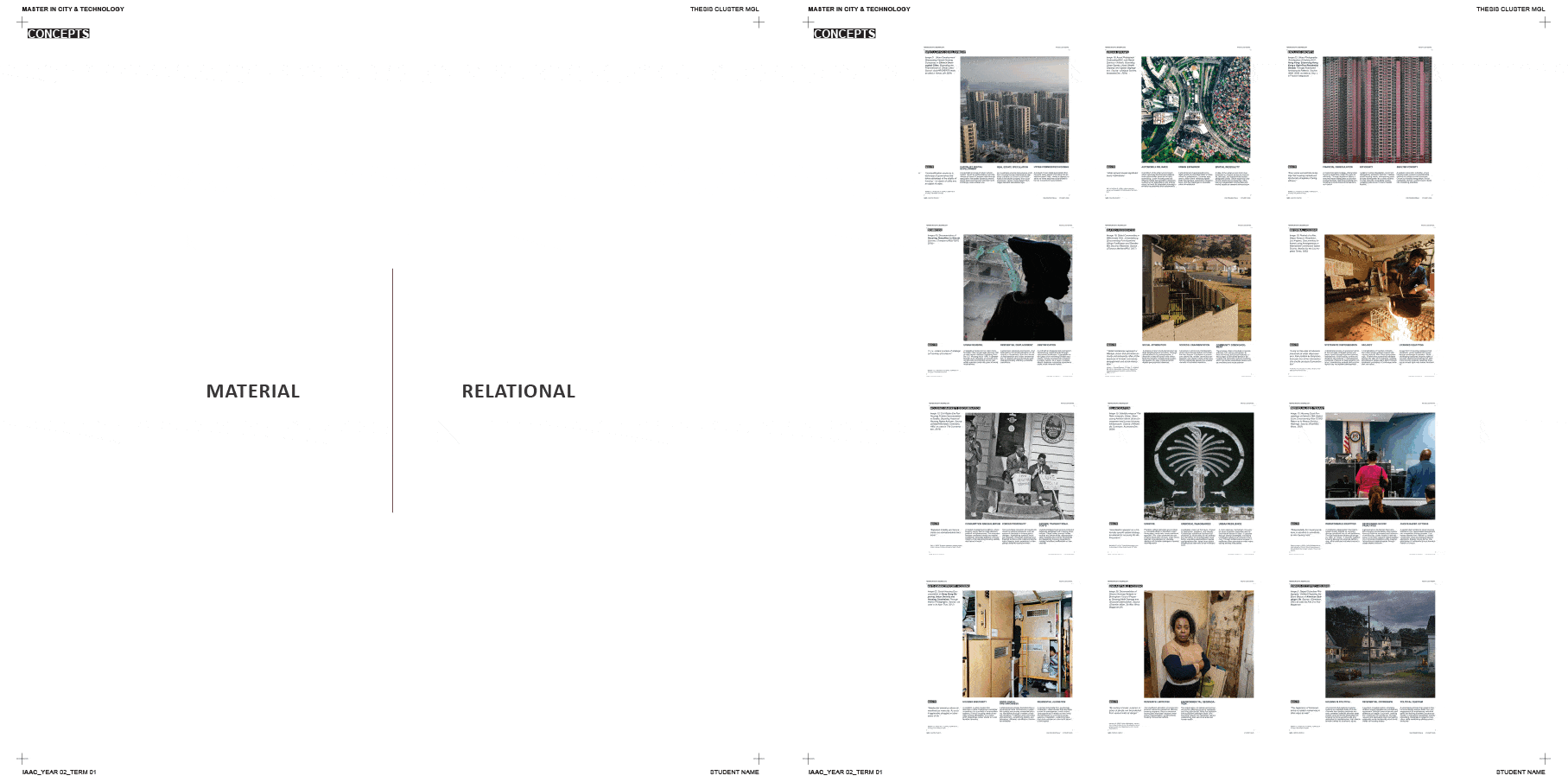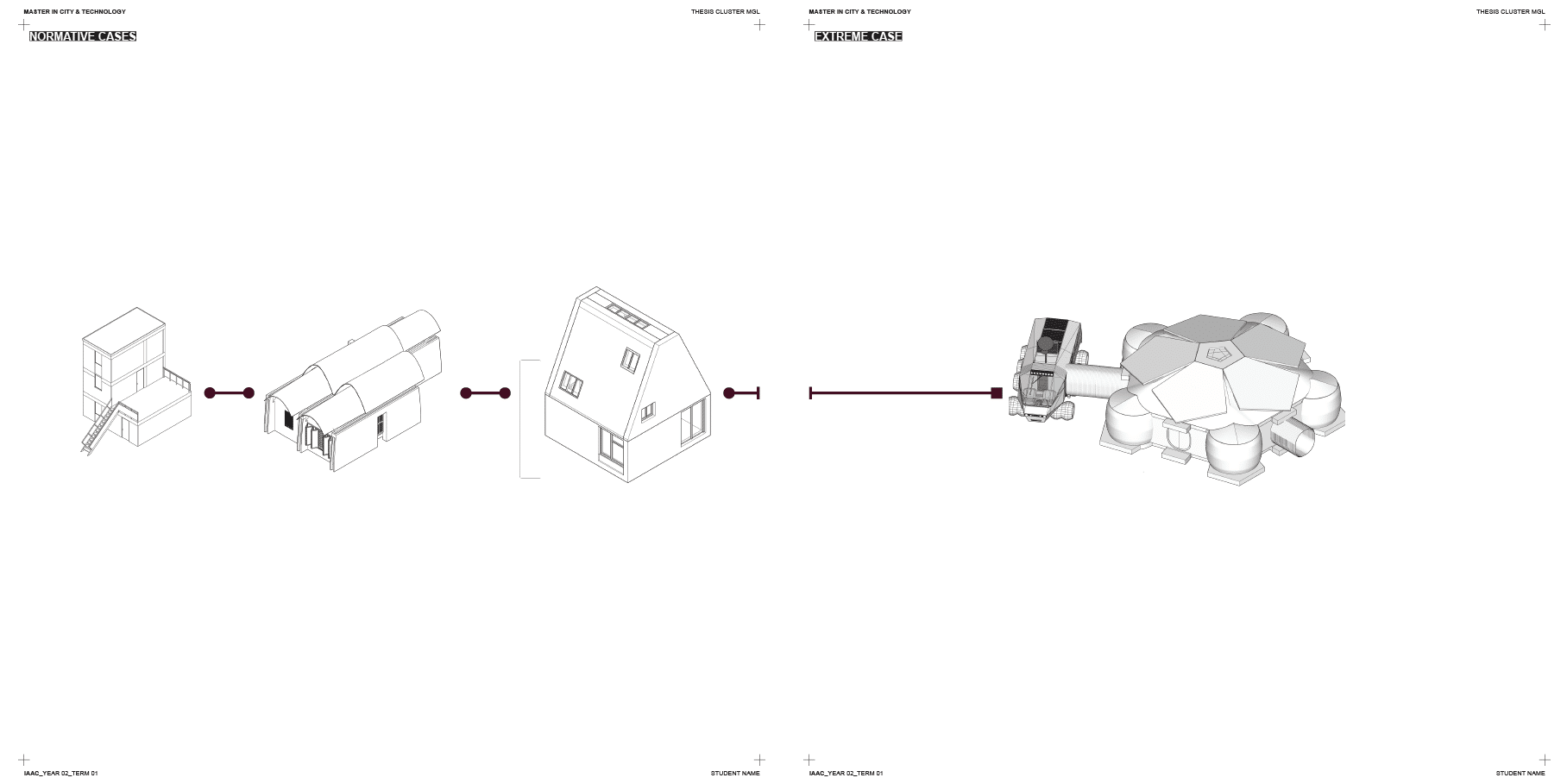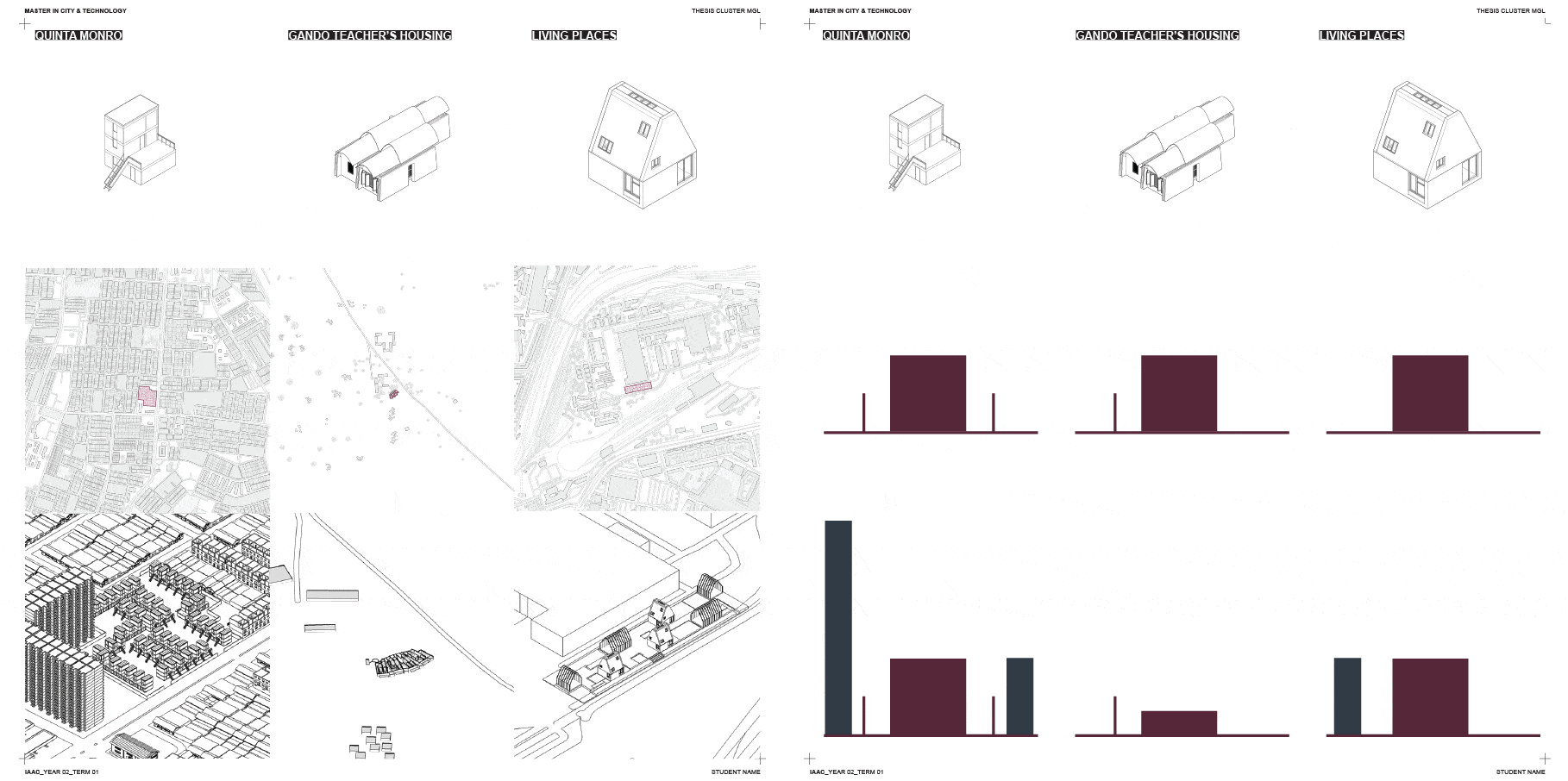This blog post presents a comparative study of spatial strategies in contemporary housing, using the concept of ‘islandisation’ as a critical lens. Islandisation, defined as a process of increasing detachment from interconnected networks, is explored across a range of case studies
Introduction
“The tension between isolation as systemic control versus isolation as protective communing raises critical questions about how alternative residential logics can effectively challenge dominant housing systems while avoiding the reproduction of fragmentary patterns they seek to resist.“
This study builds upon findings from the previous phase of my research, which identified key themes within residential design broadly categorized as:
- The relational aspects of housing, and
- The material aspects of housing.
Underlying these categories, the concept of isolation or ‘islandisation’, emerged as a critical factor, often representing a strategy for inhabiting spaces under oppressive housing conditions. These processes of isolation could be either actively chosen or forcibly imposed.

This inherent duality of ‘islandisation’, both as a response to and a symptom of problematic housing, directly informs the methodological approach of this research phase.
Consequently, the concept of ‘islandisation’ serves as a critical lens for analyzing the case studies. Simultaneously, the case studies are used to problematize the concept of ‘islandisation’ and to ground it in relation to the other concepts explored within real-world contexts.
The four case studies chosen represent distinctive visions of housing from the 21st century that have been considered innovative in their response to the housing question. These cases range from the more normative (closer to our current reality) to the more conceptual. This range allows for a comprehensive analysis of how ‘islandisation’ manifests across diverse housing typologies and contexts.

Method
To facilitate this analysis, the projects were primarily examined through architectural drawings, organized into three main categories:
Urban Plans and Context drawings: These drawings illustrate the building’s relationship with its surroundings, showing how it integrates (or isolates itself) within the urban or natural environment.
Architectural Plans : These plans reveal the building’s typology and the spatial logic of its design.
Construction Details : These drawings and diagrams showcase the building’s materiality and its system of construction.

This categorization of architectural drawings allows for a systematic comparison of the case studies, focusing on how each project addresses the interplay of urban context, spatial organization, and material expression in relation to the concept of ‘islandisation.’
At first glance, the collection of projects these case studies reveals a spectrum of approaches to balancing individual needs with communal living. However,a closer examination reveals that the concept of ‘islandisation’ manifests in distinct ways within each project:
Quinta Monroy exemplifies individualized isolation. The design’s allowance for residents to expand and modify their units fosters a sense of ownership and self-expression, creating distinct individual identities within the larger community. Gando Teacher’s Housing demonstrates resource isolation. The project’s reliance on local materials and climate-responsive design strategies creates a degree of self-sufficiency, reducing dependence on external resources and establishing a connection to its immediate context. Living Places explores ecological isolation. The focus on circular economy principles and design for disassembly minimizes the building’s environmental footprint, aiming for a closed-loop system that reduces reliance on external resource extraction and waste. Finally, Lunar Habitat represents technological isolation. The habitat’s reliance on advanced technology for life support in an extreme environment creates a self-contained technological ecosystem, separating its inhabitants from Earth’s natural systems.
Next Steps
Moving forward, the analysis will synthesize a more comprehensive understanding by addressing these key questions:
- What are the projects’ common threads and divergences?
- How do core isolated systems, other supporting systems and their weightings create inter dependencies?
- Where do projects sit on the normative-to-extreme and material-to-relational spectra, and how does this shift with the project’s evolution?
- How can project analysis better link to the theoretical foundation outlined out in the first term.

